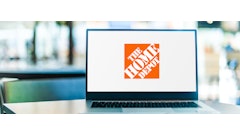
Feeling like walking a tightrope with pricing strategies? You're not alone.
Original equipment manufacturers (OEMs) in the heavy equipment industry face myriad of challenges when devising pricing strategies. From fluctuations in input costs like labor and raw materials, supply chain disruptions, to customer and market sentiments, OEMs are encountering numerous hurdles nowadays.
With the economy gradually recovering from the pandemic-induced disruptions and near record inflation, OEMs are now facing the added challenge of responding to customer expectations for lower prices due to cooling inflation. Consumer psychology plays a role, and a common misconception is that as inflation rates come down, prices come down. This may not be the case as cooling inflation means that prices are still rising but at a lower rate than before.
Amidst these developments, traditional pricing approaches may no longer suffice. Employing broad, scattershot pricing tactics, basic supply and demand strategies, and compliance with financial targets may pose risks as they often overlook market and product dynamics and fail to optimize pricing effectively. This approach may lead to overpricing some products while underpricing others, potentially alienating price-sensitive customers and impacting the company's bottom line. And recent political discussions in the news cycle may imply an added threat of exposure to price gouging lawsuits.
A more agile and flexible pricing strategy is crucial, one that accounts for market dynamics and your product’s value drivers while ensuring revenue creation and profitability.
Caught in the Middle
OEMs are getting squeezed from all sides — from suppliers, channel partners like distributors and dealers, and their end customers, in addition to the potential threat of price gouging lawsuits from legal entities that are making headlines during the election season.
OEMs in the construction and heavy equipment industry find themselves under pressure from various fronts – uncertainty in the outlook for infrastructure spending based on a potential change in administrations, interest rates that remain elevated as compared to pre-Covid levels that impact project budgets, pressure to contain costs and show profitable growth, supply chain challenges due to continued global instability, higher input costs of select raw materials and labor, fluctuating commodity prices, and customer demands for lower prices. The aftermath of Covid-19 continues to impact the construction and heavy equipment industries, with consumers being cautious about potential overpricing and turning to online platforms for competitive alternatives.
This dynamic of being “caught in the middle” is not unique to the construction and heavy equipment industry. Manufacturers in the automotive and commercial truck industry, as well as motorcycle and recreational vehicle industry, are being pressured on one side by customers who want price reductions or stabilization, and on the other by high costs due to labor and commodity prices and high-interest rates.
Performance Analysis: Impact of Market- and Value-Based Pricing
Through the application of more advanced price strategy, many OEMs have observed typical benefits of increased incremental revenue of 5% to 10%, varying by industry and organizational maturity in implementing market- and value-based pricing strategies. In addition, other key benefits of the pricing strategy, are no negative impact on customer pay quantities, and addressing over-priced product / SKUs that negatively impact brand perception.
For example, a compact construction equipment OEM with a large aftermarket parts business sought to upgrade their pricing to market- and value-based strategy. By injecting competitive data, and knowledge of its product attributes and value drivers such as weights, capacity, material types, dimensions, and branding into pricing strategies a 9% improvement in incremental revenue was captured. The OEM’s dealers shared in the upside as well.
Navigating the complexities of getting better pricing including understanding product value-drivers, as well as competitive and market insights can be time-consuming and daunting, potentially leading OEMs to retain the status quo. However, there is an alternative approach. Collaborating with an expert partner experienced in market- and value-based pricing strategies can facilitate the acceleration of additional revenue.




















